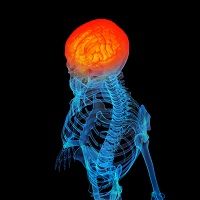Article
Should Tramadol Be Used for Patients with Traumatic Brain Injury?
Author(s):
A common treatment for traumatic brain injury (TBI) can cause noteworthy adverse effects, so researchers analyzed if the benefits outweigh the potential risks.

A common treatment for traumatic brain injury (TBI) can cause noteworthy adverse effects, so researchers analyzed if the benefits outweigh the potential risks.
TBI is a major public health concern impacting as many as 10 million people worldwide. Poor management of pain associated with TBI is associated with neuromuscular excitability causing restlessness and agitation — which in trauma situations can lead to prolonged intubation, need for re-intubation and tracheostomy. Thus, analgesia and sedation are essential for pain management in moderate to severe head injuries. Common choices for these patients can include morphine, fentanyl, alfentanil and remifentanil.
Tramadol, a narcotic-like pain reliever used to treat moderate-to-severe pain, is used to reduce the need for sedation and analgesia during weaning of patients who shows recovery and could be potentially extubated. It has been shown to be as effective as morphine, but it comes with significant potential adverse effects. In particular, tramadol is more likely to cause seizures in patients who have had a history of head injury or seizures. Why, then, is tramadol still one of the most commonly used drugs in the management of patients with TBI?
That’s a question asked by a retrospective observational study in the Journal of Anaesthesiology Clinical Pharmacology. It evaluated the clinical needs of continuing to use tramadol for patients with TBI versus complications of tramadol use among intubated patients with TBI.
The review looked at 393 intubated patients with TBI in a level I trauma center between 2011 and 2012, including patient demographics, mechanism of injury (MOI), Glasgow Coma Scale (GCS), injury severity score, Intensive Care Unit LOS, agitation scale, and failure of extubation and tracheostomy. Patients were divided into two groups based on whether they received tramadol (Group 1) or not (Group 2) during ventilatory weaning. Logistic regression analysis was performed for predictors of agitation in ICU. Most patients were males, and the most common MOI was a motor vehicle crash (39%).
Tramadol was administered in 51.4% of the participants. Tracheostomy was performed in 12.4% of the cases. Agitation was observed in 34.2% of the cases. The incidence of agitation, ICU and hospital LOS were higher in the group given tramadol (Group 1). Failure of extubation and tracheostomy were reported more frequently in Group 1 (P = 0.001). On multivariate analysis, tramadol use was an independent predictor for agitation (adjusted odds ratio 21; P = 0.001), followed by low GCS.
The authors summed up that patients with TBI given tramadol are more likely to develop agitation, undergo tracheostomy, and have longer hospital length of stay.
The findings mirror that of a dated (1997) study showing that seizures, tachycardia, hypertension and agitation were associated with low tramadol dose (≤500 mg); whereas severe complications such as coma and respiratory depression were observed with the use of higher doses (≥800 mg). Moreover, seizures are one of the known complications of overdose of tramadol use.
According to the study authors, “…tramadol was given for the weaning process and during that period acute seizures were not reported. Furthermore, in the present study low dose (50 mg given intravenously every 6 hours) was used during ventilator weaning, which might attribute to the absence of seizures, tachycardia and hypertension in those patients. Interestingly, a recent study on patients who developed seizures due to tramadol use (either therapeutic or overdose) showed that traumatic injuries occurred in around 25% of these patients.”
Limitations of the study include the retrospective nature of the study and the fact that other causes of agitation in ICU were not ruled out. The study authors hope that it will lead to larger, retrospective studies that further evaluate use of tramadol use during weaning in patients with TBI.





